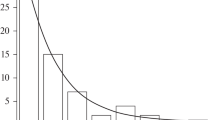Abstract
In contrast to the widely used method of electroporation, the method of soft perforation of lipid bilayers is proposed. It is based on the structural rearrangement of the lipid bilayer formed from disaturated phospholipids at the temperature of the phase transition from the liquid crystalline state to the gel state. This allows us to obtain a lipid pore population without the use of a strong electric field. It is shown that the planar lipid bilayer membrane (pBLM) formed from dipalmitoylphosphatidylcholine in 1 M LiCl aqueous solution exhibits the appearance of up to 50 lipid pores per 1 mm2 of membrane surface, with an average single pore conductivity of 31±13 nS. The estimation of a single pore radius carried out with water-soluble poly(ethylene glycol)s (PEGs) showed that the average pore radius ranged between 1.0–1.7 nm. It was found experimentally that PEG-1450, PEG-2000, and PEG-3350 should be in a position to block the single pore conductivity completely, while PEG-6000 fully restored the ionic conductivity. The similarity of these PEG effects to ionic conductivity in protein pores makes it possible to suggest that the partition of the PEG molecules between the pore and the bulk solution does not depend on the nature of the chemical groups located in the pore wall.





Similar content being viewed by others
References
Antonov VF (1998) Lipid pores: stability and permeability of the membrane (in Russian). Soros Educ J 10:10–17
Antonov VF, Petrov VV, Molnar AA, Predvoditelev DA, Ivanov AS (1980) The appearance of single ion channels in unmodified lipid bilayer membrane at the phase transition temperature. Nature 283:585–588
Antonov VF, Shevchenko EV, Kozhomkulov ET, Molnar AA, Smirnova EYu (1985) Capacitance and ion currents in BLM from phosphatidic acids in Ca2+ induced phase transition. Biochem Biophys Res Commun 133:1098–1103
Antonov VF, Smirnova EYu, Shevchenko EV (1992) Lipid membranes at the phase transition (in Russian). Moscow, Nauka, pp 1–135
Antonov VF, Anosov AA, Norik VP, Korepanova EA, Smirnova EYu (2003) Electrical capacitance of lipid bilayer membrane of hydrogenated egg lecithin at the temperature phase transition. Eur Biophys J 32:55–59
Boheim G, Hanke W, Eibl H (1980) Lipid phase transition in planar lipid membrane and its effect on carrier- and pore-mediated ion transport. Proc Natl Acad Sci USA 77:3403–3407
Chernomordik LV, Sukharev IS, Abidor IG, Chismadzhev YuA (1982) The study of the BLM reversible electrical breakdown mechanism in the presence of UO22+. Bioelectrochem Bioenerg 6:149–165
Cunningham BA, Shimotake JE, Tamura-Lis W, Mastran T, Kwok JT, Kaufman JW, Lis LJ (1986) The influence of ion species on phosphatidylcholine bilayer structure and packing. Chem Phys Lipids 39:135–143
Eldridge CA, Morowitz HJ (1978) A hydrodynamic theory of ion conductance through ohmic pores. J Theor Biol 73:539–548
Evans E, Kwok R (1982) Mechanical calorimetry of large dimyristoylphosphatidylcholine vesicles in the phase transition region. Biochemistry 21:4874–4879
Freeman SA, Wang MA, Weaver JC (1994) Theory of electroporation of planar bilayer membranes: predictions of aqueous area, change in capacitance and pore-pore separation. Biophys J 67:42–56
Gennis R (1989) Biomembranes. Molecular structure and function. Springer, Berlin, Heidelberg, New York
Glaser RW, Leikin SL, Chernomordik LV, Pastushenko VF, Sokirko AV (1988) Reversible electrical breakdown of lipid bilayers: formation and evolution of pores. Biochim Biophys Acta 940:275–287
Jacobson K, Papahadjopoulos D (1975) Phase transitions and phase separations in phospholipid membranes induced by changes in temperature, pH and concentration of bivalent ions. Biochemistry 14:152–161
Kraayenhof R, Sterk GJ, Harro W, Wong FS, Krab K, Epand RM (1996) Monovalent cations differentially affect membrane surface properties and membrane curvature, as revealed by fluorescent probes and dynamic light scattering. Biochim Biophys Acta 1282:293–302
Krasilnikov OV (2001) Sizing channels with polymers. In: Kasianowicz JJ, Kellermayer MSZ, Deamer DV (eds) Structure and dynamics of confined polymers. Kluwer, Dordrecht, The Netherlands, pp 73–91
Lee RC, Hannig J (2001) Membrane biology and biophysics. Surgical Res 25:297–305
Levitt DG (1975) General continuum analysis of transport through pores. II. Nonuniform pores. Biophys J 15:553–563
Marra J, Israelashwili J (1985) Direct measurements of forces between phosphatidylcholine and phosphatidylethanolamine bilayers in aqueous electrolyte solutions. Biochemistry 24:4608–4618
Mueller P, Rudin D, Tien H, Wescott W (1962) Reconstruction of cell membrane structure in vitro and its transformation into an excitable system. Nature 194:979–980
Petrov AC, Mitov AD, Derzhanski AJ (1982) Edge energy and pore stability. In: Bata I (ed) Advances in liquid crystal research and applications, vol 2. Pergamon, Oxford, UK, pp 695–737
Rostovtseva TK, Nesterovich EM, Bezrukov SM (2002) Partitioning of differently sized poly(ethylene)glycols into OMPF porin. Biophys J 82:160–169
Wilhelm C, Winterhalter M, Zimmermann U, Benz R (1993) Kinetics of pore size during irreversible electrical breakdown of lipid bilayer membranes. Biophys J 64:121–128
Acknowledgements
We thank Prof. G. N. Berestovskij for helpful and stimulating discussions. This work was supported partially by a grant from the Russian Fund for Basic Research.
Author information
Authors and Affiliations
Corresponding author
Rights and permissions
About this article
Cite this article
Antonov, V.F., Anosov, A.A., Norik, V.P. et al. Soft perforation of planar bilayer lipid membranes of dipalmitoylphosphatidylcholine at the temperature of the phase transition from the liquid crystalline to the gel state. Eur Biophys J 34, 155–162 (2005). https://doi.org/10.1007/s00249-004-0438-8
Received:
Revised:
Accepted:
Published:
Issue Date:
DOI: https://doi.org/10.1007/s00249-004-0438-8




